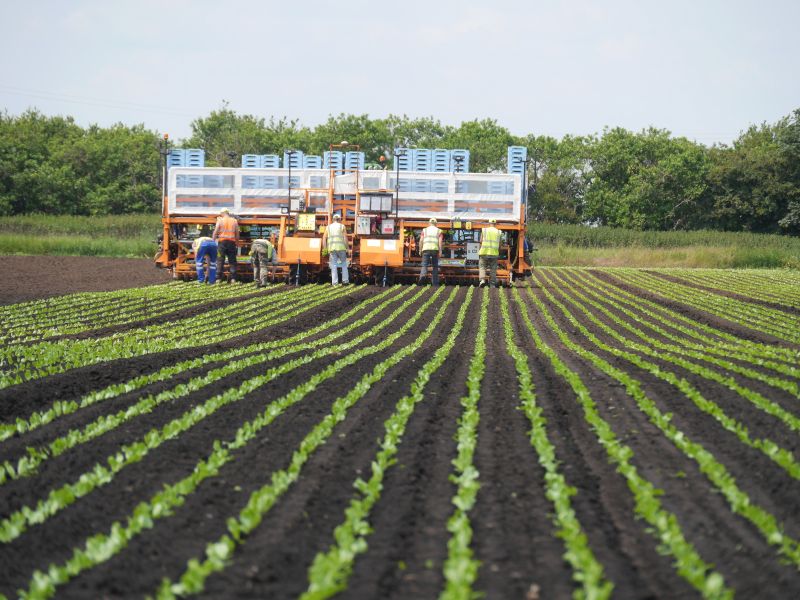
Researchers have developed a machine learning platform which works with ultra-scale images taken from the sky to help categorise lettuce crops in fields.
New software called AirSurf-Lettuce measures the quantity, size and pinpoints the location to help farmers harvest with precision.
The platform also helps farmers get the crop to market in the most efficient possible way.
Importantly, this technology can be applied to other crops, widening the scope for positive impact across the food chain.
Researchers in the Zhou Group at the Earlham Institute (EI), in cooperation with Cambridgeshire-based farming business G’s Growers, have developed the machine.
Lettuce is big business, especially in East Anglia, with 122,000 tonnes produced in the UK each year.
Up to 30% of yield can be lost due to inefficiencies in the growing process as well as harvest strategies, which, if made up, could provide a significant economic boost.
It’s important that farmers and growers understand precisely when crops will become harvest-ready, so that they can set in motion the planning of logistics, trading and marketing their produce further along the chain.
Traditionally, however, measuring crops in fields has been time-consuming and labour intensive, as well as prone to error; therefore novel AI solutions based on aerial images can provide a more effective method.
Another barrier to efficiency is the fact that inclement weather conditions, which have been increasing in recent years, can throw off harvesting times quite significantly, as crops take different lengths of time to mature.
'Deep learning technology'
The AirSurf technology uses ‘deep learning’ - a deep structured machine learning technique - combined with ultra-wide-scale imaging analysis to measure iceberg lettuce in a high-throughput mode.
This is able to identify the precise quantity and location of lettuce plants, with the additional advantage of recognising crop quality, i.e. small, medium or large lettuce heads.
Combining this system with GPS allows farmers to precisely track size distribution of lettuce in fields, which can only help in increasing the precision and effectiveness of farming practice, including harvest time.
Group Leader at EI, Dr Ji Zhou, said: “My lab is keen to seek every possible approach to translate our public funded research in algorithm design, machine learning, computer vision, and crop phenomics to techniques and tools that can be used by academic and industrial partners to address challenging problems in crop research and crop production.
“We have partnered with G’s to equip our agri-food sector with smart and precise crop surveillance and analytical methods, for which we are confident that better crop management decisions and enhanced crop marketability could be achieved through our joint efforts.“
